A Guide to Boredoms
Boredoms are a band that stretch to illogical extremes, having spent close to 30 years constantly reinventing themselves, their music, and the whole world around them. They’ve moved from a group preoccupied with driving rock to an absurd and brutal end to something approaching a spiritual musical experience like no other.
This is not a band that deals in clarity. It’s not obvious when Boredoms began, whether they’ve ended, if they’ll release a record again, what the correct spelling of their name is, or what form they exist in at any time. Some of their records have been released in an edition of one; others were issued by major label behemoth Reprise/Warner Bros. The constant in the band’s chaotic lifespan is Eye, also known as EYE (or EYヨ). Their shamanic frontman and driving force, Eye’s limitless imagination takes them to places that have not just redefined the outer limits of rock, but also challenged notions of what a band is and can be. Their dalliance with the major label system may have seemed like an attempt at reframing underground ideas in a populist context. In truth, Boredoms must have known they would never break through to the other side.
The first time I saw Boredoms was at Glastonbury in 1995, where they appeared at the height of Britpop, sharing a stage with Reef, Ash, Shed Seven, and Dodgy. This was at the end of the whirlwind punk phase of the band, a style sometimes described as “wackoaggro.” The program notes from the festival describe them as “more than a little intolerable” – a high recommendation, in Boredoms-speak.
Trying to make sense of the route Boredoms have followed leads through a series of dizzying highs and frustrating dead ends. At one point in the late ’80s they released a series of cassette-only works, the fabled Boretronix series, although how many of those were made available remains open to question. To confuse matters further, at some point Eye got access to his own vinyl-cutting machine and started spewing out one-off releases. Yamazaki “Maso” Takushi, a fellow Japanese noise artist who records as Masonna, got ahold of one. “I have a Boredoms record that's an edition of one,” Takushi told Bananafish magazine. “It's cut right on top of an old New York Dolls record, so the needle slides back and forth from Boredoms to Dolls. Really great.”
Despite operating in a state of willful disarray, it’s possible to trace the various phases Boredoms have been through. There are distinct markers that indicate chapters opening and closing, even if it feels like Eye is writing the story backwards, in his own language, lost somewhere between anarchy and control.
Here, we look at how the Boredoms got to where they are now, a place that drummer Yoshimi – a constant in the band’s lineup since 1988 – has hinted could signal a new beginning. After years of drum-focused activity, she recently told the Wire magazine that Boredoms are “thinking of recording without drums” for their next project – a move that would effectively turn the band inside out for the nth time.
1983-1986: Beginnings

Tracing Boredoms’ origin story involves looking at Eye’s work with Hanatarash (or Hanatarashi, as they were originally known). An early Japanoise outfit possessing a recklessness that would make Boredoms appear positively sedate in comparison, Hanatarash were a cross between industrial pioneers Einstürzende Neubauten and GG Allin; stories about their deranged shows are now legendary.
Eye met his Hanatarash collaborator, Zeni Geva guitarist Mitsuru Tabata, at a Neubauten show. Hanatarash shared Neubauten’s love of using power tools on stage, leading Eye and Tabata to create a world around them so fantastical it’s hard to believe it even existed. Dead cats got sawed in half with machetes, audiences were asked to sign waivers, a show was stopped when Eye tried to light a Molotov cocktail on stage. Fortunately, photos of a notorious incident where Eye drove a bulldozer on-stage still survive.
Many of the elements that would define Boredoms already existed in Hanatarash: strange, scatological humor; Eye’s brand of un-language; a fondness for ambitious stunts; and music that feels like it might collapse on itself at any moment. Listening to records by the band feels like staring at a jumble of puzzle pieces that could never possibly slot together.
1986-1990: Anal by Anal – Soul Discharge
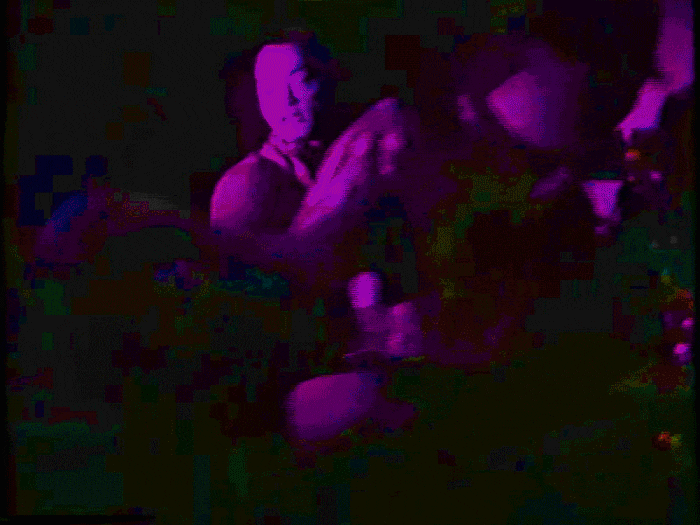
By 1986, Eye formed Boredoms out of the ashes of Hanatarash, adapting their name from the Buzzcocks’ “Boredom.” Their formative years were marked by a blur of people filing through the ranks, plus their debut three-track EP, a studio recording between Eye and Tabata named Anal by Anal.
The original lineup of Boredoms was pulled together from another project Eye was involved in, Acid Makki & Combi and Zombie. While members subsequently came and went, the most important development was the meeting between Eye and Yoshimi. Introduced by Tabata, who was on the cusp of leaving the band, Eye and Yoshimi initially formed a band named Hasty Snail Baby (later renamed UFO or Die).
Yoshimi recalled seeing Boredoms play in a Wire feature from 2002, highlighting how the band lived up to their name. “I remember it was so boring that I left the first time I saw them,” she said. Eye concurred, saying in the same feature: “There’s something beautiful about it when you’re utterly bored.”
This mode of operation didn’t last long. What followed was Boredoms’ debut album, Osorezan no Stooges Kyo (repackaged in North America, along with Anal by Anal, as Onanie Bomb Meets the Sex Pistols), which (un)refined their interests in the outer limits of punk, speed metal, and psychedelia. Elements of Butthole Surfers, Napalm Death, and even Captain Beefheart seeped into the mix, allowing Eye and his crew to burp and scrape and claw at your consciousness.
Boredoms weren’t alone in operating on the periphery of rock in Japan, although few were as funny or just plain boneheaded. Songs had titles like “Lick’n Cock Boatpeople,” “God from Anal,” and “Jah Called AC/DC.” Despite obsessing the same end-of-music tendencies as compatriots Merzbow and Ruins, Eye often distanced Boredoms from other artists. In the book Japanoise: Music at the Edge of Circulation, David Novak recalled Eye saying Boredoms were “not Noise, just ‘noisy.’”
Yoshimi wasn’t on board for Osorezan, but a bizarre lineup change for the anti-musical Boredoms, in which Yoshikawa Toyohito moved from drums to percussion (because he “didn't know how to play drums,” said Eye), gave her room to join, forming the core pairing the band remains based on.
In 1988, a key tour in Japan hooked Boredoms up with Jon Spencer’s sleaze-rock outfit Pussy Galore. Spencer described Boredoms’ performances as being in “full noise-rock/Butthole Surfer mode – just crazy, wild, incredible energy.” Importantly, it was one of the first points of contact for Eye and the New York rock and avant-noise scene.
Eye came into the orbit of experimental composer John Zorn around this time, via a show Zorn witnessed by another Eye side project named Geva Geva. Zorn recruited Eye to play in his Naked City band and passed a tape of Boredoms on to former Butthole Surfers member Kramer, who was releasing wild avant rock and psychedelic folk artists on his Shimmy Disc label. Kramer “flipped,” according to Zorn, and licensed the band’s new album, Soul Discharge, for release on Shimmy.
Soul Discharge is a riot of confusion, full of drums that sound like pieces of scrap metal, nonsensical vocals, and wild soloing. The opening “Bubblebop Shot” makes being in Boredoms sound like the best and worst thing in the world, culminating in a slow slide to the floor that resembles the band melting in a warped acid haze.
North American music was dealing with extremes of its own at the time of Soul Discharge, so it’s no surprise Boredoms were so cherished on the US underground circuit; these were kindred spirits, broadcasting from another time and place, but similarly hell-bent on driving rock into new stomach-churning pastures.
1990-1997: Pop Tatari - Chocolate Synthesizer
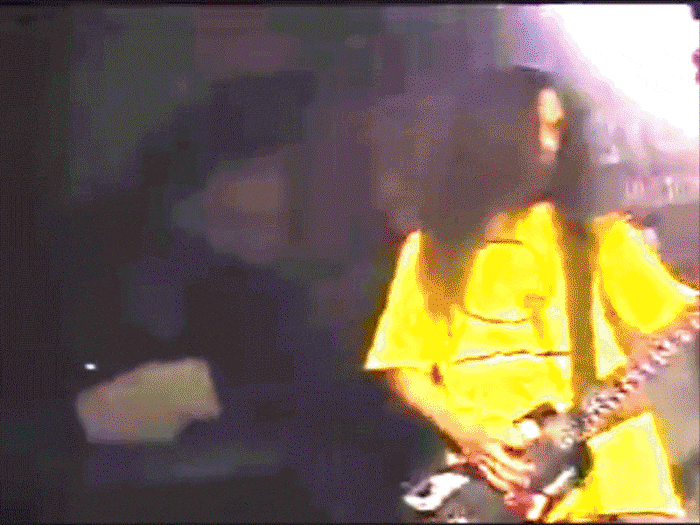
The Naked City record came out on a major, Nonesuch/Elektra, beginning an unlikely dalliance with the corporate rock world for Boredoms. They signed with Warner Japan in 1992, making it one of the most peculiar post-Nevermind deals in a sea of major label floundering, and one that caught the attention of David Katznelson, VP of A&R at Warner Bros. in the US.
Katznelson intended to sign the band to Reprise in the US, causing ripples in the band’s homeland, where Warner Japan extended their deal to six more albums. As a consequence, Katznelson got taken out to dinner by happy execs at Warner Japan who, he claims, “treated me like a star, as if I had just signed the Beatles or Eric Clapton.”
Things only got stranger from there, with Boredoms delivering an uncompromising double-shot of albums: Pop Tatari (1992) and Chocolate Synthesizer (1994). A further album titled Wow 2, released on Zorn’s Avant label, was sandwiched in between the two in 1993.
The primary mood on the first of these records is of regression – Pop Tatari is undoubtedly one of the least commercial albums to be released on a major, but it’s also one of the most adolescent in outlook. At times it’s positively cartoon-like, with its core sensibilities paralleling John Kricfalusi’s riotously juvenile show from this era, The Ren & Stimpy Show.
Boredoms’ ties to the U.S. underground were cemented in the early ’90s. A 1992 tour with Sonic Youth was followed in ’93 by an absurd flirtation with the big time, when they took the opening slot on a few dates on Nirvana’s North American tour.
The artist Cali DeWitt, who was Frances Bean’s nanny at the time, recalled the mixed response to Boredoms’ sets in Everett True’s book, Nirvana: The True Story. “There were shows where the entire arena would be flipping off the Boredoms and the next night everyone might enjoy them,” DeWitt said. A Japanese TV documentary, Music for Psychological Liberation, shot the bands collaborating, although only a tantalizing glimpse of it remains.
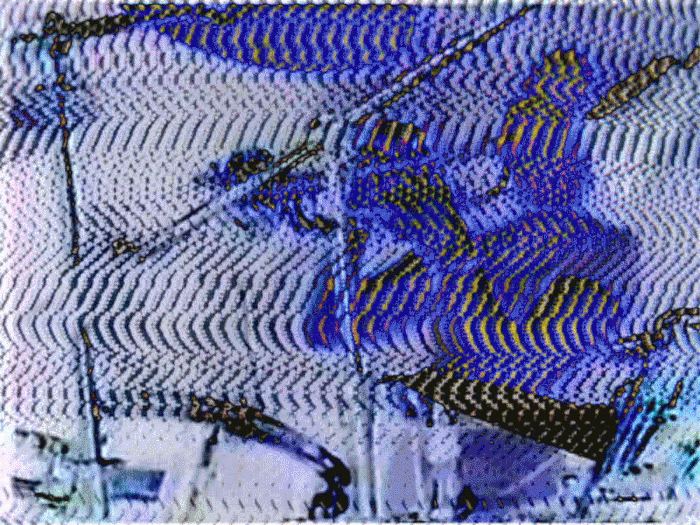
In 1993, Boredoms began releasing records in their Super Roots series, which became a vital outlet for flinging further ideas out into the world. One volume is a three-track take on a children’s TV theme, while a couple center on a single hypnotic song.
Chocolate Synthesizer was released in 1994, again by Warner/Reprise in the United States. Riddled with a tougher sound, the album signaled that Boredoms were on the cusp of change. While the opening “Acid Police” was the best of their gruff, Buttholes-worshiping material, there’s also a tribal element to the drums, a downer vibe throughout, and a sense that Boredoms were done with the splatter-paint punk of yore.
Still, they weren’t finished with pouring metaphorical acid in the eyes of unsuspecting audiences. Touring duties in ’94 included a stint on the main stage at Lollapalooza, apparently at the request of Kurt Cobain (Boredoms remained on the lineup after Nirvana pulled out). These were end times for major label signees sucked along on the contrails of Nevermind, although for Eye’s band it scarcely mattered. It’s hard to imagine Pop Tatari or Chocolate Synthesizer sounding any different had they been released elsewhere.
Boredoms’ Lollapalooza shows got called an “incorrigible noise” by the New York Times, while Variety said they delivered “a forgettable set under any circumstances” that was “best-suited for small clubs and the lunatic fringe.” It’s hard to imagine Eye being anything less than amused by that, although his days of subverting from within the corporate system were numbered. Boredoms’ contract with Warner/Reprise ended after Super Roots 6 in 1996.
1997-2004: Super æ-Seadrum/House of Sun
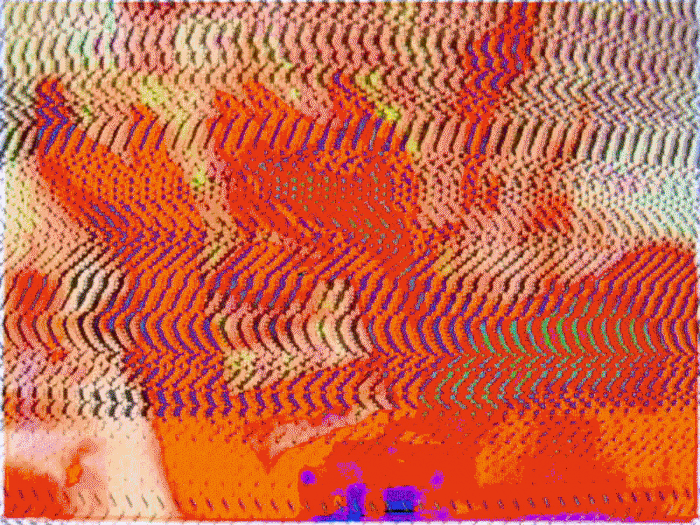
In 1997, Yoshimi activated her long-running side project OOIOO for the first time, releasing the excellent o8o. For Boredoms, this period marked a sizemic shift in outlook, first signaled by Super æ, which was a redemptive letting go of everything that came before.
Released on Katznelson’s Birdman label in the United States, Super æ found the band immersed in electronics, krautrock, and psychedelic rock – not necessarily an unusual combination, but one that felt like no other in their hands. If prior records were an onslaught of sound, here Boredoms temper the crunching riffs with contemplation, replacing the compact energy of the past with a long stretch out into an album that feels like one continuous track.
The title Super æ is a powerful emblematic force in Boredoms’ story, continuing their use of the word “super” and adding the “æ” digraph, which is pronounced like “eye”. What it all means is unlikely to ever be explained; Boredoms’ English-translated interviews are often a mesh of confusion, humor, and willful signal jamming. "We like supermarkets and we have been and still are influenced by supermarkets,” Eye joked to the Washington Post in 1999, when quizzed about the significance of the word.
At this time Boredoms began fixating on the number seven – something that would have a significant impact in their later career. Eye explained the genesis of this preoccupation to Hisham Bharoocha in 2008: “When I was in Palenque, I climbed the Sun Temple, and when I counted the number of steps, there were 77,” he explained. In the same interview Eye points out how, in Okinawa, the number seven means “a lot,” “many,” and “spreading.” “The idea is that everyone can share,” he said. “The number seems fertile that way.”
Eye’s interest in leftfield dance music came splattering out of the gate in this era via a key non-Boredoms release: the Shock City Shockers compilation. Released as a joint venture with outsider-pop musician Cornelius, a number of the “artists” are little more than Eye pseudonyms, wrapped in cover art he replicated when putting together the sleeve for Beck’s Midnite Vultures in ’99.
Caught in an intense moment of creativity, Boredoms releases flowed between ’97 and ‘98. Another OOIOO album, Feather Float, came out, and Eye brought his DJ Pica Pica Pica work into the open, through the album Planetary Natural Love Gas Webbin’ 199999. This was Eye’s hyper-manic vision of dance music, with BPMs set at an impossibly high clip, mirroring familiar jungle motifs while an intense buildup of samples sucked everything into outright tumult.
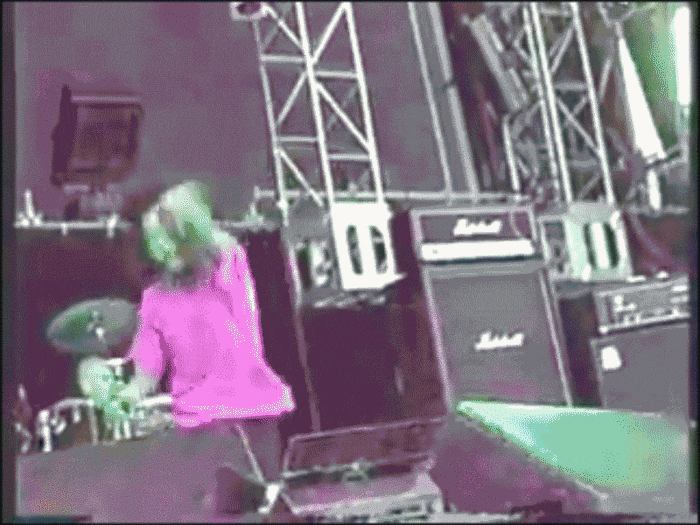
Under Boredoms’ name, more Super Roots were released, the Rebore remix project further cemented Eye’s obsession with club culture, and an EP and full-length LP surfaced named Vision Creation Newsun. The latter was Boredoms heading out further into the psychedelic ether, lost to themselves and the world in trance-inducing material that spun the Super æ concept into a new dimension, with track titles now reduced to a series of symbols.
It’s through those symbols that Vision Creation Newsun scatters past and present markers related to the band. Two of them – a circle and spiral – would come to dictate how the band would set up on stage at shows, while the digital translation of one symbol on the limited edition version of the album reads as “Hourglass/Boretronix Logo.”
By the time of the new millennium, Boredoms were re-named V∞redoms (although they still used Boredoms in the West). With a drummer-heavy lineup in place, their live shows in Japan were turned into tribal/mystical events. YouTube footage of an appearance at the Fuji Rocks Festival from 2001 highlights how mercurial the performances had become, with the cameras focusing on both Eye – lost somewhere in the center of things – and audience members dancing, heads down, cut adrift from all around them.
The influence of Boredoms peaked in the early 2000s, particularly on Brooklyn noisemakers Black Dice and Providence whiteout rock outfit Lightning Bolt. Both bands fed from opposite ends of Boredoms palette, with Black Dice taking the uglier side and sifting it through banks of broken down electronics, while Lightning Bolt dug into the nihilistic rock thrash of their early material, shoving it further into the abyss than ever before.
Curiously, the band’s renown in the United States reached an inadvertent peak in 2002 with the release of the Flaming Lips’ Yoshimi Battles the Pink Robots, which was titled after – and featured a guest appearance by – Yoshimi.
Seadrum/House of Sun, a further extension of the band’s meditative side, came out in 2004, becoming the final record in their Warner Japan contract. The record was thought to consist of old material – the “seadrum” part of the title referred to recordings of drums made on a beach, as explained in a number of prior interviews. Writing about a U.S. tour undertaken to support the album, Sasha Frere-Jones of the New Yorker noted that “nobody seemed to know what to say” at the close of the show. “It was a Boredoms show, which sounded like the last Boredoms show and like nothing else,” he wrote.
2004-now: Boadrum
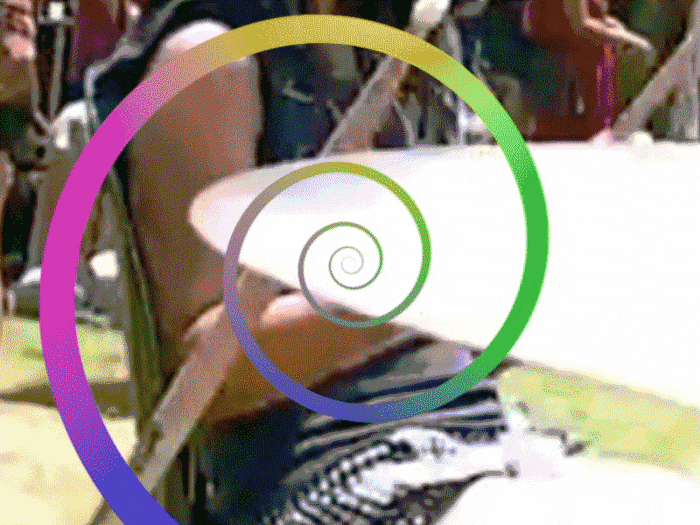
Boredoms hadn’t completely given up on recording by 2004 – a few releases were issued post Seadrum, including Super Roots 9 and 10 and the CD/DVD set Live at Sunflancisco. But it was clear that they were focusing on their sun-worshipping live shows, with an emphasis on the number seven building to the point where Eye had a seven-necked guitar built called the Sevena.
By 2007, Boredoms reached far beyond the realm of the standard concert format, staging a performance on July 7, 2007 in Brooklyn, NY, where 77 drummers performed a 77-minute long piece named 77 Boadrum. The show was a wild mixture of their spiritual and mischievous sides, as Yoshimi explained to The Stool Pigeon. “The idea came from a Japanese folk tale,” she said. “But we really just wanted to see what’d happen if 77 people banged drums at once and the waves of sound travelled round them.”
Further Boadrum events ensued, including 88 drummer displays in Brooklyn and Los Angeles in 2008 (the Brooklyn incarnation led by fellow travellers Gang Gang Dance). The lineup often fluctuated between performances, including a series of nine and ten drummer efforts in 2009 and '10, an 111 drummer performance in Australia in 2011, and a trip to Germany with 12 drummers in 2012. Musicians would often return for multiple Boadrum events, including Hisham Bharoocha, Ponytail’s Jeremy Hyman, and Kid Millions of Oneida.
The band hadn’t lost its sense of theatricality; at the nine-drummer events it was common for them to start the show with eight drummers on stage, only for Yojiro Tatekawa to be carried in on a podium, thwacking away at his kit. Their show at ATP in New York in 2009 went on for so long that a stagehand dismantled equipment around them as they played. They even took the idea seaward in 2009, performing on a Russian ferry in the South Pacific to mark the longest solar eclipse of the 21st century.
The shows featured Eye at the center of things, with the drummers spiraling out like a coiled-up snake around him, allowing great ripples of energy to flow outward. Sometimes a diagrammatic map was provided to illustrate the setup for the shows, such as this one for a 91-drummer event in 2013 in Japan, which featured 91-year-old drummer Setouchi Jakucho. In 2014, they even stripped away some of the participants’ kit without shedding an ounce of power for this festival performance.
What the future holds for Boredoms is impossible to guess. Certainly, Eye appears to be fostering an interest in “controlling” other musicians through his actions, with Boredoms shows featuring him operating motion sensors that correspond to work being played by others. Such experiments could be a small part of Boredoms’ history or may end up consuming them for years. The not knowing, as ever, is all part of the thrill.
Gifs by Yoshi Sodeoka